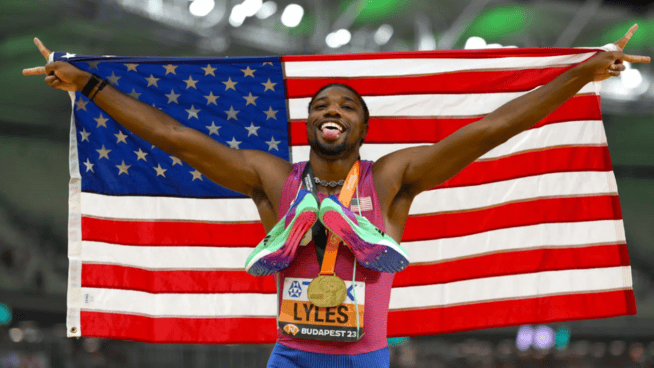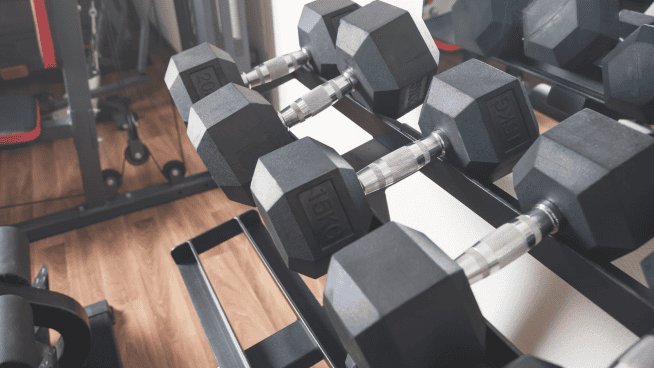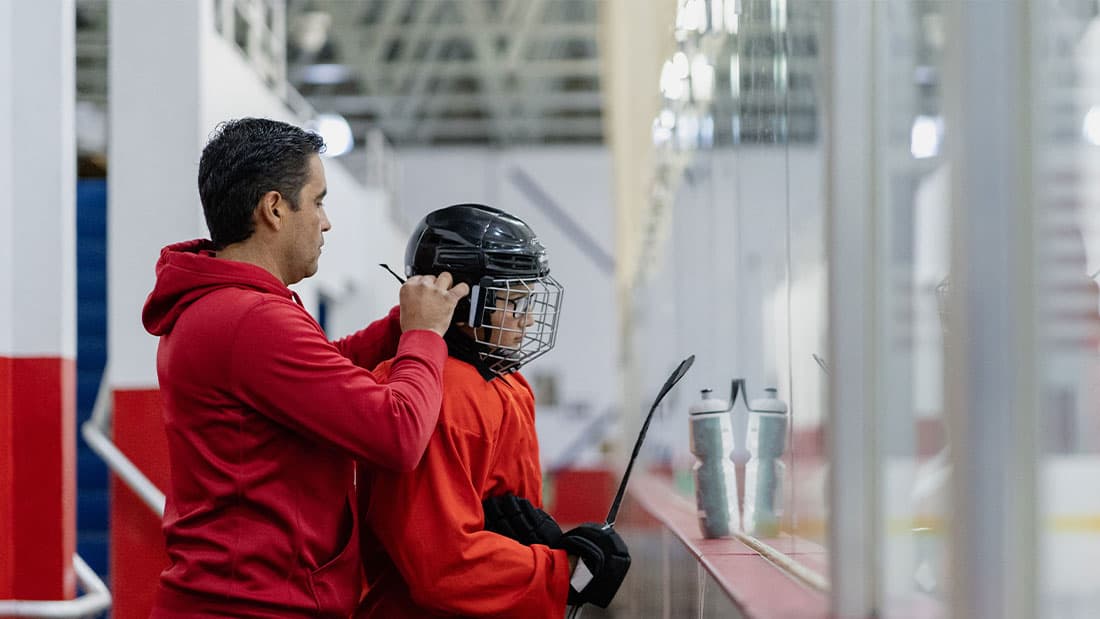Loaded Stretching to Build Muscle and Boost Strength!
Sometimes, it’s not about the training routine that you are doing but the things you incorporate into your training routine that create a maximal effect. For example, incorporating loaded stretching or slow eccentric movements into your reps or sets.
Loaded stretching is one method that can do just that. You don’t have to change the core of your program. You can add it at the end of your program or alternate it between sets.
Doing this will help you maximize your goals to increase muscle mass, boost muscular strength, or both.
What is Loaded Stretching
The explanation is precisely its name: you use resistance or tension to load your stretch. You can use barbells, plates, dumbbells, bodyweight, resistance bands, etc.
How to Do It
If you are alone, choose lighter weights you can control so you are not stuck under a bar like a bench press. Or opt for heavier dumbbells so you can easily ditch them.
If you have a spotter, then you can go heavier with exercises.
Use about 70-85% of your one rep max and adjust accordingly to hold the loaded stretch for 45-60 seconds.
Always put safety first. Slowly lower your body or the load. This will stimulate the eccentric portion of your lift and the proprioceptors (muscle spindles) that strengthen your stretch.
Once you find the bottom of the movement in a stretched position, hold it. The goal is to hold it for about 45 seconds. You will notice that the stretch will slowly move deeper and deeper.
When you hold for 45 seconds, make sure it is being challenged. Around the 45-second point, you should be fatigued. So, use and set the appropriate load.
If you use a barbell like in a bench press, the bar should not touch your chest.
Loaded Stretch Exercises
Feel the stretch and hold it for each position. It can be done with many different muscles (Biceps, Triceps) etc.
Chest
Hold the bottom position of the stretch. Ensure the handles, bar, or dumbbells are not touching the chest.
Cable or Dumbbell Fly, Loaded Pushups, Loaded Dips, Bench Press
Back
Stretching with the load using your back, your arms will be extended. Ensure you keep your shoulders down so your mid-back muscles and shoulder blades are working, too.
Loaded Hanging Pull-Up, Lat Pull-Over, Back Row Hold
Hamstrings
Hold the loaded position with good posture and form from the hip hinge bent over position.
Deadlift, Nordic Hip Bridge, Single Leg Deadlift
Squats
Hold the bottom position of the squat. Again, make sure you load good posture. You want your muscles and tendons to develop in a good form, not a dysfunctional one.
Barbell Squats, Single Leg Squat, Cable Squats
Lunge
Hold the lunge position, stretching the back leg quad and hip flexor.
Lunge, Split Squat Lunge (Elevated Back Foot)
How it Builds Muscle
It creates occlusion. Now loaded stretching is not better than blood flow restriction (BFR) training, which involves restricting blood flow to a muscle during exercise using cuffs or bands. However, loaded stretching induces occlusion, which creates muscle swelling and aids in muscle growth.
While it can create some occlusion effects, it’s not a primary method for BFR training.
It stimulates strength and muscle-building hormones and enzymes. The eccentric part and stretch under load stimulate more IGF1, called, Insulin Growth Factor. The more IGF1, the more testosterone and growth hormone are released to improve strength and repair muscle growth. The eccentric phase of muscle contraction, where the muscle lengthens under load, is associated with greater mechanical tension on muscles. This mechanical tension enhances metabolic stress and muscle damage essential for IGF1 activation.
It produces greater muscle protein synthesis. Loading eccentric movement and stretching increases protein synthesis needed to build bigger muscles.
How Long Do You Stretch?
The total time is about 3-5 minutes of training. However, you will break this down into sets of 45-60 seconds to achieve the total.
The rest is about 2-3 minutes between sets.
Train until you can reach 60 seconds for 3-5 sets, then add more weight.
When Should You Do It?
The best time to do loaded stretching is individually.
Firstly, it can be done in between sets. This is a great way to stimulate strength and hypertrophy.
Secondly, If your goal is to build muscle, then after a workout, it is probably best so you don’t sacrifice strength. This produces a greater stretching effect that leads to greater growth processes inside the muscles from eccentric motion.
Thirdly, if you need stronger eccentric strength or stretch, do it at the beginning of a session.
Other Benefits of Loaded Stretching
1. Stretching with resistance and load will improve mobility and range of motion with springiness and resiliency, not laxity. When you just stretch your muscles, they become lax because you are stretching the elastic part out of the flexibility.
2. Loaded stretching increases your concentric power. Your eccentric stretch phase dictates the power concentrically for muscles to contract. Think of this like a rubber band. The further back you stretch it to shoot it, the further it will shoot when you let it go.
3. Loaded stretching strengthens tendons. When you hold the stretch with tension and load, it produces TUT—Time Under Tension. The best way for tendons to get stronger is not through resistance training. It is from TUT. When tendons get stronger, they boost your strength.
Before you begin, use lightweights to feel what your body can do and control it. If you go too heavy, you can hurt yourself. Once you understand the concept, incorporate it into your routine.
Check out my INSTANT STRENGTH book for total strength, speed, and power programs.
To maximize stability, mobility, and flexibility, check out my book, THE BALANCED BODY.
To see great exercises, methods, and techniques videos, subscribe to my YouTube channel, BALANCED BODY.
RECOMMENDED FOR YOU
MOST POPULAR
Loaded Stretching to Build Muscle and Boost Strength!
Sometimes, it’s not about the training routine that you are doing but the things you incorporate into your training routine that create a maximal effect. For example, incorporating loaded stretching or slow eccentric movements into your reps or sets.
Loaded stretching is one method that can do just that. You don’t have to change the core of your program. You can add it at the end of your program or alternate it between sets.
Doing this will help you maximize your goals to increase muscle mass, boost muscular strength, or both.
What is Loaded Stretching
The explanation is precisely its name: you use resistance or tension to load your stretch. You can use barbells, plates, dumbbells, bodyweight, resistance bands, etc.
How to Do It
If you are alone, choose lighter weights you can control so you are not stuck under a bar like a bench press. Or opt for heavier dumbbells so you can easily ditch them.
If you have a spotter, then you can go heavier with exercises.
Use about 70-85% of your one rep max and adjust accordingly to hold the loaded stretch for 45-60 seconds.
Always put safety first. Slowly lower your body or the load. This will stimulate the eccentric portion of your lift and the proprioceptors (muscle spindles) that strengthen your stretch.
Once you find the bottom of the movement in a stretched position, hold it. The goal is to hold it for about 45 seconds. You will notice that the stretch will slowly move deeper and deeper.
When you hold for 45 seconds, make sure it is being challenged. Around the 45-second point, you should be fatigued. So, use and set the appropriate load.
If you use a barbell like in a bench press, the bar should not touch your chest.
Loaded Stretch Exercises
Feel the stretch and hold it for each position. It can be done with many different muscles (Biceps, Triceps) etc.
Chest
Hold the bottom position of the stretch. Ensure the handles, bar, or dumbbells are not touching the chest.
Cable or Dumbbell Fly, Loaded Pushups, Loaded Dips, Bench Press
Back
Stretching with the load using your back, your arms will be extended. Ensure you keep your shoulders down so your mid-back muscles and shoulder blades are working, too.
Loaded Hanging Pull-Up, Lat Pull-Over, Back Row Hold
Hamstrings
Hold the loaded position with good posture and form from the hip hinge bent over position.
Deadlift, Nordic Hip Bridge, Single Leg Deadlift
Squats
Hold the bottom position of the squat. Again, make sure you load good posture. You want your muscles and tendons to develop in a good form, not a dysfunctional one.
Barbell Squats, Single Leg Squat, Cable Squats
Lunge
Hold the lunge position, stretching the back leg quad and hip flexor.
Lunge, Split Squat Lunge (Elevated Back Foot)
How it Builds Muscle
It creates occlusion. Now loaded stretching is not better than blood flow restriction (BFR) training, which involves restricting blood flow to a muscle during exercise using cuffs or bands. However, loaded stretching induces occlusion, which creates muscle swelling and aids in muscle growth.
While it can create some occlusion effects, it’s not a primary method for BFR training.
It stimulates strength and muscle-building hormones and enzymes. The eccentric part and stretch under load stimulate more IGF1, called, Insulin Growth Factor. The more IGF1, the more testosterone and growth hormone are released to improve strength and repair muscle growth. The eccentric phase of muscle contraction, where the muscle lengthens under load, is associated with greater mechanical tension on muscles. This mechanical tension enhances metabolic stress and muscle damage essential for IGF1 activation.
It produces greater muscle protein synthesis. Loading eccentric movement and stretching increases protein synthesis needed to build bigger muscles.
How Long Do You Stretch?
The total time is about 3-5 minutes of training. However, you will break this down into sets of 45-60 seconds to achieve the total.
The rest is about 2-3 minutes between sets.
Train until you can reach 60 seconds for 3-5 sets, then add more weight.
When Should You Do It?
The best time to do loaded stretching is individually.
Firstly, it can be done in between sets. This is a great way to stimulate strength and hypertrophy.
Secondly, If your goal is to build muscle, then after a workout, it is probably best so you don’t sacrifice strength. This produces a greater stretching effect that leads to greater growth processes inside the muscles from eccentric motion.
Thirdly, if you need stronger eccentric strength or stretch, do it at the beginning of a session.
Other Benefits of Loaded Stretching
1. Stretching with resistance and load will improve mobility and range of motion with springiness and resiliency, not laxity. When you just stretch your muscles, they become lax because you are stretching the elastic part out of the flexibility.
2. Loaded stretching increases your concentric power. Your eccentric stretch phase dictates the power concentrically for muscles to contract. Think of this like a rubber band. The further back you stretch it to shoot it, the further it will shoot when you let it go.
3. Loaded stretching strengthens tendons. When you hold the stretch with tension and load, it produces TUT—Time Under Tension. The best way for tendons to get stronger is not through resistance training. It is from TUT. When tendons get stronger, they boost your strength.
Before you begin, use lightweights to feel what your body can do and control it. If you go too heavy, you can hurt yourself. Once you understand the concept, incorporate it into your routine.
Check out my INSTANT STRENGTH book for total strength, speed, and power programs.
To maximize stability, mobility, and flexibility, check out my book, THE BALANCED BODY.
To see great exercises, methods, and techniques videos, subscribe to my YouTube channel, BALANCED BODY.











